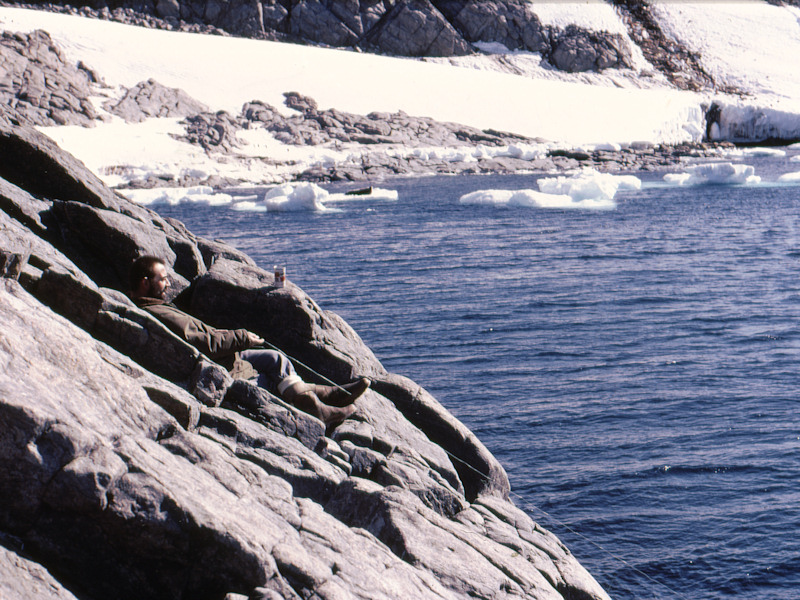
Photo album: "End of sojourn"
Fly over a photo with the mouse to enlarge it
Click on a photo to open it in a new window
We
are drawing near the end of my sojourn at the base of Dumont d'Urville. Since we
were very busy during the estate campaign, these two last months have gone very
quickly. Amongst the different works of that campaign, we made measurements to
control the characteristics of the riometer's rotating antenna. This allowed me
to fly three hours in the helicopter, with an improvised transmitter. To let the
antenna cable pass we had to remove a little panel in the floor just under my
feet. Those three hours were very cold! When the transmitter was "on",
it perturbed the radio of the helicopter, I had therefore to switch it off, in
order to permit the people on the ground to guide the helicopter on the right
trajectory (using a theodolite), an other person gave me the order to switch on
the transmitter when the helicopter crossed the field of an other theodolite.
After a long time a flight I received a request I'll never forget. The
responsible of the operation asked me: "Guy, could you switch on the
transmitter a few seconds before being asked to?". I understood then, that
my boss was beginning to be a little tired.
To simplify the comments of the photos, hereafter, the seventeenth expedition
(mine) is called TA17 (i.e. Terre Adélie 17), the eighteenth one is called
TA18. The "Groupe de Recherche Ionosphérique", French laboratory
responsible of the Iono's instrumentation and teams, is called with its acronym
GRI.
 |
The "salon" (sitting room and library) is on the left of the bar. There is, behind the shelves, on the left, a small room with LP records and a phonograph. |
 |
Hubert Touzel (responsible of the power station, TA17), spends a few hours of rest fishing, comfortably installed on the rock face, a can of beer within reach. |
 |
A "cave" between the northern extremity of Pétrels island and a tiny rock islet, bound together with a several-metre thick layer of ice. Accessible only during winter when the sea is frozen. |
.
.
.
.
.
.
.